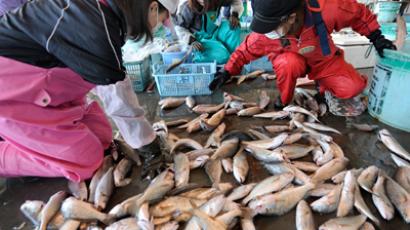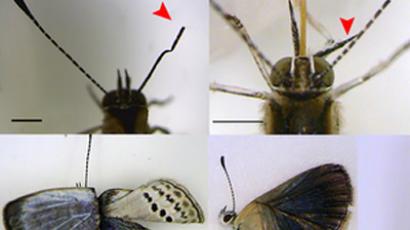Fukushima debris hits Hawaii

Debris set adrift by the 2011 Japanese tsunami has made its way to Hawaii, triggering concerns over the unknown effects of the radiation it may carry from the meltdown of the Fukushima reactor.
Debris has washed ashore the islands of Oahu and Kauai and the state’s Department of Health has been asked to test some of the incoming material for radiation levels. Refrigerator parts, oyster buoys, housing insulation, storage bins, soda bottles, toys, fishing nets, plastic trash cans and even Japanese net boats have all washed up on Hawaiian sands in the past few weeks, triggering serious environmental concerns over both water pollution and radiation exposure.Long-term exposure to radiation can cause cancer, gene mutations, premature aging and in severe cases, death. The consequences of the influx of debris are unknown, causing local agencies to advocate precaution in picking up the Japanese debris.After a Kona fisherman discovered a 24-foot Japanese net boat floating along the Hawaiian coast early this month, the National Oceanic and Atmospheric Administration began an investigation to trace where some of the items have come in from and possibly find its owners.“On behalf of NOAA and the State of Hawaii, we ask that anyone who finds personal items, which may have come from the tsunami, to please report them to county, state and/or federal officials,” William J. Aila, Jr., Department of Land and Natural Resources (DLNR) chairperson, told Hawaii 24/7 News.Depending on an object’s weight, density and other physical characteristics, it can take months or years to travel from Japan to Hawaii, which explains why many of the same type of items are floating ashore at the same time. Although an estimated 70 percent of the tsunami debris sank offshore, millions of tons of wreckage are still adrift and slowly making landfall, reports LiveScience.Aside from the unknown radiation risks, some of the debris is bringing invasive species to Hawaii, thereby threatening the island chain’s ecosystem and introducing the possibility of consuming contaminated seafood. The 24-foot boat found by the fisherman was covered in blue mussels, which are native to Japan and harmful to Hawaii’s marine life – especially the corals.“If it does take hold, the concern is that they will just be able to populate at a fast rate and out compete some of our native species,” Jono Blodgett, the aquatic species program leader at DLNR, told the Honolulu Civil Beat. And even if Hawaiians attempt to kill the invasive mussels, their attempts might be fruitless.“When species are stressed out and about to die, they might release their eggs or sperm,” he said. The fisherman who discovered the abandoned Japanese boat saw the mussels as an opportunity for a tasty meal, raising additional concerns about Hawaiian locals’ exposure to radiation found in seafood. Blodgett believes the boat likely drifted to sea before the Fukushima reactors had a meltdown, making the attached mussels safe to consume – but the possibility of contamination remains, especially if the creatures are found on some of the other debris.Even though Hawaiian officials have minimized panic by assuring residents that radiation risks are low, their investigations and detection programs indicate that the concern is still there. The state of Hawaii purchased a $15,000 portable radiation detection device in September, while the Hawaii Department of Health has conducted quarterly shoreline surveillance since the tsunami hit in 2011. This monitoring has increased since the debris began to wash upon the Hawaiian shoreline.But some of the debris is so small that it becomes quickly buried in the sand on the beach, making it impossible to clean up or even detect.“Many places on the beach, it’s hard to differentiate the sand from the plastics on the surface,” Nicholas Mallos of the Ocean Conservancy group told LiveScience.And as long as the radiation risks are unknown, Hawaii residents should avoid collecting floating refrigerator parts or consuming Japanese mussels they might find on washed up debris.














